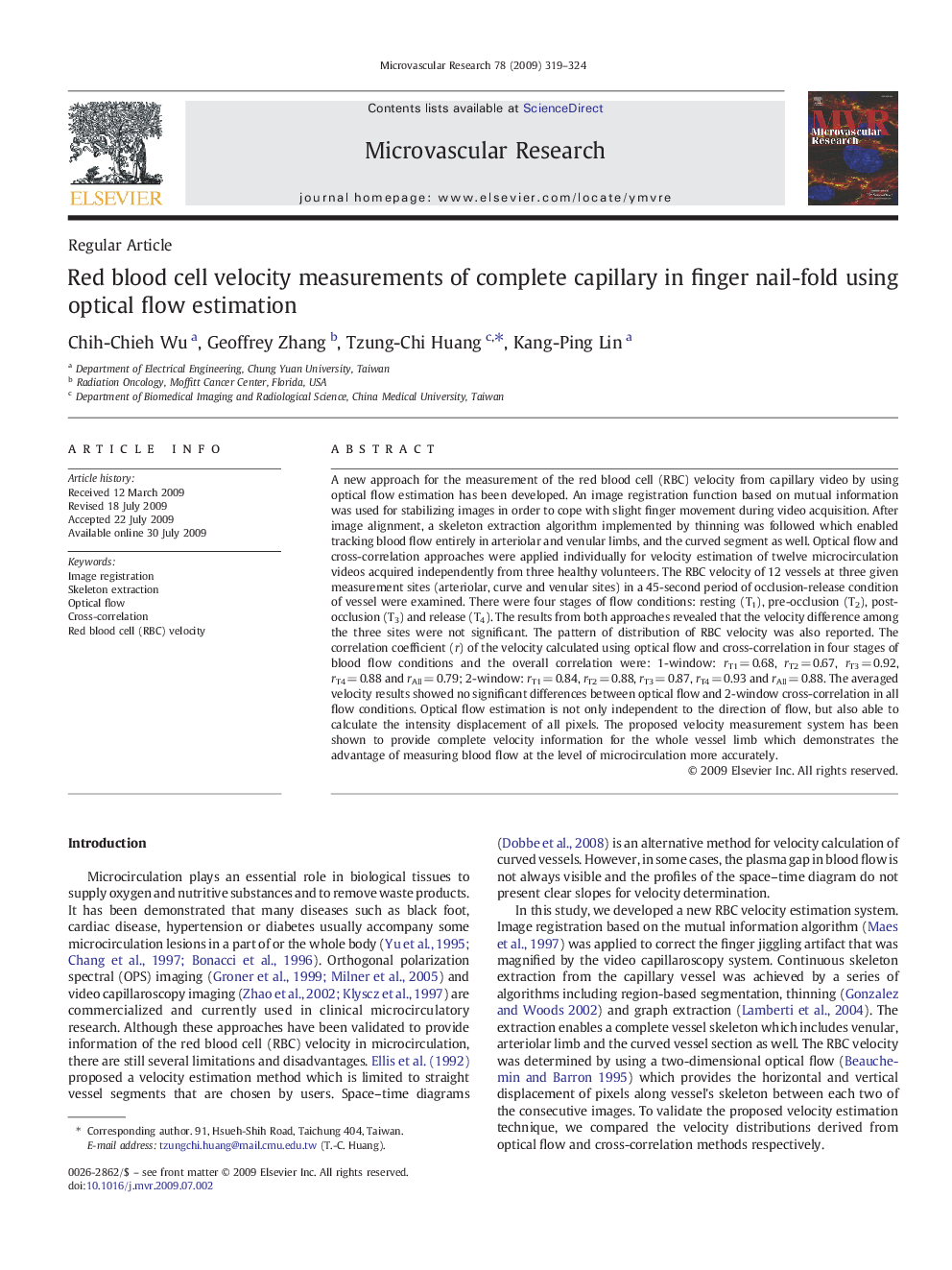| Article ID | Journal | Published Year | Pages | File Type |
|---|---|---|---|---|
| 1995303 | Microvascular Research | 2009 | 6 Pages |
A new approach for the measurement of the red blood cell (RBC) velocity from capillary video by using optical flow estimation has been developed. An image registration function based on mutual information was used for stabilizing images in order to cope with slight finger movement during video acquisition. After image alignment, a skeleton extraction algorithm implemented by thinning was followed which enabled tracking blood flow entirely in arteriolar and venular limbs, and the curved segment as well. Optical flow and cross-correlation approaches were applied individually for velocity estimation of twelve microcirculation videos acquired independently from three healthy volunteers. The RBC velocity of 12 vessels at three given measurement sites (arteriolar, curve and venular sites) in a 45-second period of occlusion-release condition of vessel were examined. There were four stages of flow conditions: resting (T1), pre-occlusion (T2), post-occlusion (T3) and release (T4). The results from both approaches revealed that the velocity difference among the three sites were not significant. The pattern of distribution of RBC velocity was also reported. The correlation coefficient (r) of the velocity calculated using optical flow and cross-correlation in four stages of blood flow conditions and the overall correlation were: 1-window: rT1 = 0.68, rT2 = 0.67, rT3 = 0.92, rT4 = 0.88 and rAll = 0.79; 2-window: rT1 = 0.84, rT2 = 0.88, rT3 = 0.87, rT4 = 0.93 and rAll = 0.88. The averaged velocity results showed no significant differences between optical flow and 2-window cross-correlation in all flow conditions. Optical flow estimation is not only independent to the direction of flow, but also able to calculate the intensity displacement of all pixels. The proposed velocity measurement system has been shown to provide complete velocity information for the whole vessel limb which demonstrates the advantage of measuring blood flow at the level of microcirculation more accurately.
